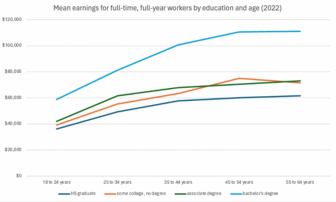
It’s hard to sit down to write today about what would make for good remote learning, when my brain wanders to the question everyone is writing—and meme’ing—about, which is whether or not schools can safely reopen for in-person learning. The safety of students and staff is obviously paramount. But it would certainly be easier to choose the more risk-averse option of remote learning if we had any faith that we could do it well.
So, based on what we’re learning about how remote learning went in the spring, I want to attempt to articulate a dream of the guiding principles for remote learning. (You can read my previous posts on my homeschool experience and our greater community needs.)
First, let’s start with the outcome: the greatest educational losses are likely to be those that are not measured on standardized tests, but in essential human skills. At MFI, we tend to define those as the 6Cs, a framework offered by learning scientists Roberta Michnick Golinkoff and Kathy Hirsh-Pasek in their book, Becoming Brilliant. Those skills are collaboration, communication, content, critical thinking, creative innovation, and confidence. These are the priority skills that we have frequently argued are already missing from the accountability-based education policy regime so prevalent today. They are even more absent from low-income schools and schools that serve primarily students of color.
But, perhaps the pandemic, which is requiring flexibility and changing standards, offers us a chance to reprioritize—and to get it right.
What, then, are the guiding principles for quality remote learning?
First, access. We need to ensure that all households have the internet access and devices they need for remote learning.
Second, a focus on teaching critical skills as a higher priority than specific content standards. This needs to be combined with an awareness of the social-emotional stresses most children are under during the pandemic. Even in households that are faring relatively well, kids are internalizing that something is wrong, have fears about the virus, and miss their friends.
Third, engagement over everything. In times of uncertainty and chaos, it’s understandable that teachers may reach for the most predictable, traditional models of education with the teacher as the explainer and the students as passive absorbers of information.
But we can’t settle for that. Prioritizing engagement would mean teachers minimize video lecturing and worksheets and plan screen use carefully, with breaks. Teachers can arrange short, small group meetings with students as a complement to full-class experiences.
Next, we have to plan for parents who can’t be engaged and for grandparents who aren’t great at computers. I can imagine this looks a lot like students logging on to a video-call, then hanging up for a while with good instructions about what to do and how to find help. This is going to require growth in young people’s ability to direct their learning. (Which would be marvelous!)
Then, we need a process for feedback that balances student needs with the immense stresses on teachers. They may not be able to grade every assignment. Another reason to mostly scrap worksheets! Project-based learning proponents center preparing for “authentic audiences,” which can give more meaning to student work.
Let’s lean into creativity. I would guess that we would all benefit from art therapy right now! Three tubes of watercolor paint, a brush and some paper would be a small but meaningful investment right now in student well-being. Teachers can focus less on right or wrong and more about growth and experimentation.
Lean into the outdoors. If we do get students together in-person, let’s do it outdoors as much as possible. If students are at home, while giving an equity consideration to the environments of different families, encourage outdoor observation and engagement.
Lean on the moment. Imagine a school year where everything was arranged for students to act as historians, journalists, or sociologists of our current times. With the increasing national race consciousness inspired by the Black Lives Matter movement, and our societal inequities under a spotlight due to the covid outbreak, our day-to-day lives right now contain so much that students could unearth. It would be relevant to their lives and turn on their observation skills and critical thinking.
As I write all of this, aware of the immense ask it is of teachers, I am also aware of the exciting possibilities and freedom. If these guidelines make sense, the type of learning that fits them best is experiential and based on student interest. Teachers would be guides, not explainers; motivators, not disciplinarians; interrogators of thought, not judges. It could be the type of learning that at MFI, we’ve advocated for for years.
I can’t end on that high note, sadly, without responsibly observing that there is real harm in children not being in school. This is true, though at different scales, both for vulnerable children for whom school is a hub of stability and even a source of meals, and for well-off children who are still under the unusual stress of isolation and confinement. I am skeptical that the dream I’ve described is remotely possible for families under intense duress, or children in families that are really troubled. Those children will need extra support and we have to figure out how to make it happen. These times are not normal, and our children, whether they are five or 15, need so much tenderness and care.
They also need us to figure out how to not waste this year.







